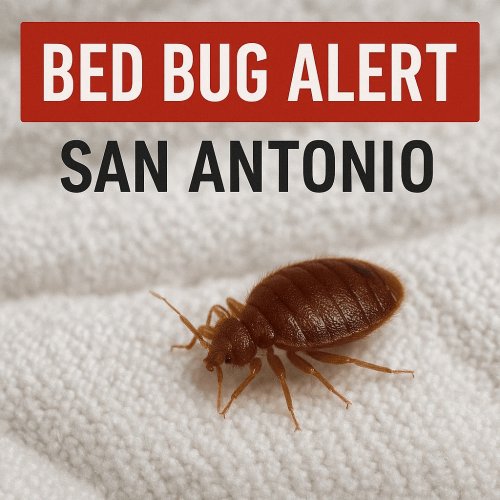Bed Bug Control for Poultry Houses: Total Inside & Out Protection
Discover expert tips from Safe Guard Pest Control on protecting your poultry house from bed bugs inside and out. Prevention and action plans included.

Bed Bug Control for Poultry Houses: Total Inside & Out Protection
Bed bugs are no longer just a nightmare for hotels and homes—they’re showing up in poultry operations, and that’s a big deal. At Safe Guard Pest Control, we’re sounding the alarm because prevention is far easier and cheaper than fixing an infestation once it spreads.
Let’s talk about how you can protect your poultry house inside and out—because when it comes to bed bugs, every inch matters.
Why Bed Bugs Are a Hidden Threat to Poultry Farms
Not Just a Human Problem Anymore
Bed bugs don’t just bite people—they’re opportunistic pests that will feed on chickens if given the chance. Recent findings have confirmed they’re becoming more common in poultry houses, where they can hide in cracks, crevices, and equipment.
How Bed Bugs Disrupt Poultry Operations
When bed bugs feed on birds, it stresses them out, decreases feed conversion, and even affects egg production. Over time, that’s a hit to your bottom line. These pests multiply fast, and without control, your operation could face major disruptions.
How Bed Bugs Invade Poultry Houses
Common Entry Points
Bed bugs sneak in through everything—crates, egg flats, feed sacks, or even second-hand equipment. Once they find a warm place, they nest and start multiplying.
The Role of Equipment and Workers
Bed bugs often hitchhike on clothes, tools, and even delivery vehicles. That’s why pest control isn’t just a barn issue—it’s an entire operation issue.
Why Early Detection is Key
Catching them early is the best chance at full eradication. Once they’re embedded, treatment becomes more invasive and expensive.
Warning Signs of Bed Bugs in Your Poultry Operation
Unusual Chicken Behavior
Are your chickens showing signs of restlessness at night? Pecking themselves more than usual? It might not be mites—it could be bed bugs.
Physical Evidence of Bed Bugs
Dark spots (bed bug droppings), shed skins, and live insects along beams or near insulation are strong signs of an infestation.
Protecting the Inside of the Poultry House
Cleanout and Sanitation Best Practices
A regular deep clean between flocks is essential. Vacuuming, power washing, and heat treatments can drastically reduce pest survival.
Heat Treatments and Monitoring Systems
Bed bugs die at 120°F. Safe Guard Pest Control can implement targeted heat treatments, along with pheromone monitors to detect early activity.
Safe Insecticide Application for Livestock Areas
We only use poultry-safe, EPA-approved insecticides—no shortcuts. Applications are timed between flock cycles to ensure safety and effectiveness.
Defending the Outside of the Poultry House
Structural Exclusion Measures
Seal up every crack and crevice. Caulking, screen repairs, and door seals can block bed bugs from getting in or moving between buildings.
Landscape and Environment Control
Keep grass trimmed and remove clutter near your poultry house. Overgrown areas are prime hideouts for pests—and staging zones for invasions.
Vehicle and Visitor Decontamination
Require workers and vendors to change shoes, sanitize, and wear clean coveralls before entering the site. It sounds extreme, but it works.
The Safe Guard Pest Control Approach
Who We Are at Safe Guard Pest Control
We’re pest control professionals with years of experience in protecting agriculture and livestock industries from devastating infestations.
Our Custom Plans for Poultry Farms
We don’t use one-size-fits-all treatments. Our technicians assess your specific operation, identify risk points, and design a tailored solution.
Ongoing Monitoring and Support
After treatment, we offer monthly checkups, monitor traps, and even train your team to spot warning signs early.
Partnering for Long-Term Protection
Staff Training and Awareness
Education is prevention. We provide on-site training so your team knows how to identify bed bugs and respond fast.
Working With Your Veterinarians and Techs
We collaborate with animal health professionals to ensure our methods support overall flock wellness and don’t conflict with vet care.
Continuous Risk Assessments
Our risk assessments evolve as your operation changes. New flock? New structure? We adjust our protocols accordingly.
Conclusion: Don’t Wait for an Outbreak
Bed bugs in poultry operations are real—and rising. At Safe Guard Pest Control, we’re helping producers stay ahead of the curve. With thorough inspections, prevention strategies, and long-term partnerships, your facility can stay pest-free.
Call us today before bed bugs become your next expensive lesson.
FAQs About Bed Bug Management in Poultry Facilities
1. Can chickens really get bed bugs?
Yes! While bed bugs prefer humans, they will bite chickens if they’re the only available host.
2. What’s the fastest way to tell if I have bed bugs in the barn?
Look for shed skins, blood spots, and unusual bird behavior—especially at night.
3. Are heat treatments safe for poultry houses?
Absolutely. We conduct them between flocks and ensure the building is sealed properly for effectiveness.
4. Can I treat bed bugs myself with store products?
Most DIY products aren’t safe or effective for large agricultural settings. Professional help is highly recommended.
5. How often should I have my poultry house inspected?
We suggest quarterly inspections and every time you introduce new equipment or flock members.














